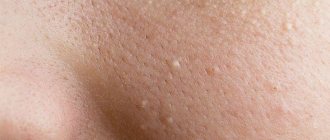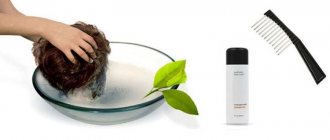How to clean the soleplate of an iron from carbon deposits at home
Modern household appliances are very convenient, but maintaining them also causes a lot of hassle.
Not so long ago there were irons without steaming capabilities, we used a water sprayer for flowers or simply sprayed water from our mouths so that we could better iron a dry shirt or sheet. And the sole of the iron was only metal. Since ancient times, such soles have been cleaned of carbon deposits with salt.
When I bought a new iron, I thought that the Teflon surface of the iron could not be cleaned with salt. The seller confirmed my thoughts and recommended an iron with a metal sole.
Of course, this is not so important; you can clean the soleplate of any iron; there are many different methods, but not all of them are suitable for an iron with a Teflon surface. This should be kept in mind when purchasing an iron.
But if troubles do occur, let’s try to get rid of them and clean the iron at home.
Teflon coated iron
Laundry soap
I read about this ancient method on the Internet, but also learned about its disadvantages.
Cleaning the soleplate of the iron with laundry soap is quite simple.
Heat the iron and turn it off. Rub the soap over the soleplate of the iron. In this case, the deposits will lag behind the surface of the iron; all that remains is to wipe the iron with a dry cloth.
Repeat the procedure several times if necessary.
But at the same time, soap gets clogged into the holes on the sole of the iron, from which steam comes out. And I don’t know how to clean them later.
Wax and salt
We will need an ordinary household candle; we need to grate it on a fine grater and pour it onto a hard surface. Sprinkle fine table salt on top.
Be sure to cover this mixture with a napkin.
Use a hot iron (unplugged!) to iron the napkin.
The wax will begin to melt and interact with the salt. This hot mixture will cause the carbon deposits on the iron to melt and it will remain on the napkin.
Wipe off the remaining wax with a napkin from the surface of the iron. This method can be used if the iron is slightly dirty.
Special pencil for cleaning the iron
An iron with a Teflon surface is best cleaned using a special iron pencil.
Just like with soap, rub the sole of a hot iron with a pencil; the carbon deposits will melt and flow off.
We looked at how to clean the soleplate of a Teflon-coated iron. These same methods can also be used to clean metal-coated iron deposits. But there are other products that cannot be used on Teflon irons so as not to damage their surface.
Iron with metal sole
Hydroperite tablets
Hydroperite tablets, which are sold in pharmacies, are very effective in cleaning the surface of the iron from carbon deposits. I sometimes use them to gargle, they are great for sore throats.
To clean the iron you will need a pack of tablets - 10 pieces.
It is important to follow safety precautions, as when cleaning the iron, corrosive gas will be released. Therefore, be sure to put on a mask and open the windows, but it is better to do this procedure on the balcony or on the street.
Grind the tablets in a mortar to a powdery state. Pour the powder onto a hard surface covered with waste cloth.
We heat the iron by setting the regulator to mode 2. Then be sure to unplug the iron.
We pass it over the surface with powder from hydroperite tablets. The powder begins to heat up, evaporate, and the surface of the iron becomes clean.
Vinegar, soda, hydrogen peroxide, salt
How else can you clean your iron at home? Use our favorite helpers - natural household cleaning products that are always at hand.
You can wipe off carbon deposits and stains on the soleplate of the iron with a rag soaked in vinegar. The iron must be hot. You can also iron a cloth soaked in vinegar with a hot iron.
Try cleaning a cold iron with a mixture of baking soda and hydrogen peroxide.
Irons with metal soles can be cleaned with coarse table salt, which is what I do most often.
Pour salt onto the surface and iron it with a hot (unplugged) iron. The iron is cleaned literally before your eyes, and the salt turns brown.
Cleaning irons with different surfaces
Use folk methods and industrial cleaning products with caution. The choice of the appropriate method for removing dark deposits on the sole of the device depends on the coating material. It is important to take precautions. Stainless steel, Teflon and ceramic coatings must not be cleaned using the following tools:
- Sharp objects.
- Metal brush.
- Hard brush.
- Sandpaper.
- Abrasive substances.
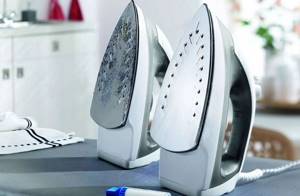
Otherwise, you can scratch the surface of the soleplate of the device, which will become a source of more burning of the surface when ironing clothes.
As a rule, the soleplate of the iron is made of stainless steel or aluminum. To avoid sticking of woolen and synthetic fabrics during the ironing process, manufacturers of household appliances apply the following types of coating to electrical appliances:
- Ceramics. This type of surface ensures that the iron quickly warms up and glides evenly over the clothing material. The disadvantage of such electrical devices is the possible formation of chips and scratches.
- Titanium. The advantage of such irons is the strength and durability of the material. The disadvantage of titanium coating is the high cost and long heating time of the device.
- Teflon. Synthetic fabrics do not stick to such a surface. The only downside to the Teflon surface is that it scratches easily.
- Enamel. Durable coating, which is characterized by high cost.
- Sapphire. Irons with such a surface can be cleaned with a brush and brush, as they are protected from mechanical damage.
Some companies use a combined surface for the sole of their irons. To prevent the formation of dark deposits on the iron, many electrical appliances include covers for ironing synthetic and woolen materials. You can replace them with a piece of gauze or natural fabric through which you need to iron the clothing material.

How to clean the inside of an iron from scale with citric acid
About once every six months you need to clean the inside of the iron, as scale can form there even if all operating rules are followed.
This can be done using citric acid, just like when cleaning a washing machine.
Pour two tablespoons of citric acid into a glass of water, stir thoroughly until the acid dissolves and pour into the water tank.
We heat the iron, set the steam regulator to the desired position and try to iron the unnecessary napkin. The iron will release dirt onto the cloth. Ironed it several times, pour out the water. We will see how the water, after the action of citric acid, will remove scale and become cloudy and dirty.
We repeat the procedure several times.
Preventive measures against scale formation
The only way to prevent the appearance of limescale on iron elements is to use water purified from salts - distilled or specially prepared deionized water, which is sold in household appliance stores. Pre-boiling or filtering the water partially eliminates the precipitation of salts.
After ironing the clothes, the remaining liquid in the tank must be drained!
Many models of modern irons are equipped with cleaning systems that protect the heating element from scale formation:
- anti-lime rods (attached to the steam supply level switch);
- replaceable anti-lime cassettes with resin that absorbs mineral salts from water;
- built-in water softening system (cartridges with granules that prevent the precipitation of salts).
The presence of cleaning systems in irons does not exclude preventive maintenance of equipment: the anti-lime rod must be placed in a solution of citric acid or vinegar every six months, and replacement cassettes must be replaced with new ones.
Clean the inside of the iron with vinegar
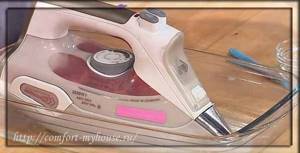
In order to clean the inside of the iron, you can bathe it! I recently found out about this myself.
But keep in mind that this procedure is only suitable for irons with a metal coating!
You will need a small bath in which to place the iron. Water must be poured into the bath so that the sole of the iron is covered to a height of 1.5 cm. You can measure the required amount of water in advance.
Boil water, add 2 tablespoons of 6% vinegar to 1 glass of water, pour the water and vinegar into the bath.
Heat the iron, unplug it and place it in a bath of water. Bath the iron for 10 minutes until the water cools.
Then you need to let the iron dry for 24 hours. And only after that iron the unnecessary fabric.
Also, after any method of cleaning the iron, you must first try its effect on an old piece of cloth or gauze, so as not to spoil a good thing.
These are the ways I know how to clean an iron at home.
What you have to clean
The device needs to be cleaned both inside and out. External surfaces are wiped regularly to remove dust and dirt. The lower part is freed from particles of burnt fabric and rust. The water container is protected from scale and sometimes mold.
What types of soles are there?
The quality of ironing directly depends on the condition of the main part of the iron. The material from which it is made is important.
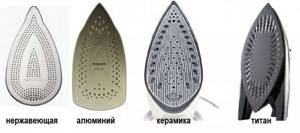
The most inexpensive are aluminum and stainless steel. They heat up quickly, but fabric fibers stick to them, forming carbon deposits. Therefore, modern electrical appliances have additional coatings - titanium, ceramic, sapphire, enamel, or even mixed, for example, ceramics with silicon or titanium with sapphire. Manufacturers are constantly experimenting, inventing new types of soles. For example, metal-ceramics stands out among the new products.
Modern coatings have pros and cons:
- Titanium is durable, perfectly smooths out wrinkles, is scratch-resistant, and even metal buttons and locks are not afraid of it. But it takes a long time to warm up and is expensive.
- Ceramics and glass ceramics glide perfectly, clean quickly, do not leave a shine on the fabric, and heat up evenly. But they are prone to cracks and chips.
- Synthetics do not stick to Teflon; it glides easily even with low heat, but it can be easily scratched.
- Ceramic metal irons well and is easy to clean, but it also requires very careful handling.
- Sapphire is resistant to damage, but is expensive and does not heat up immediately.
- Enamel coating is also expensive.
Experts and housewives, based on the combination of qualities, give the palm to stainless steel and ceramics. Let's look at how to clean the soleplate of your iron.
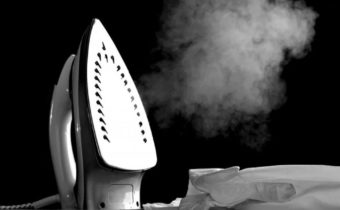
Rules for using irons
Modern irons require respectful treatment, namely compliance with basic operating rules. If you follow them, then you won’t have to clean the iron, or at least you will need to do it extremely rarely.
- Set the ironing mode correctly depending on the type of fabric.
- Do not leave the iron on the surface of the item unless you are ironing.
- Do not talk on the phone while ironing clothes and linen.
- After every third ironing (the third time of using the iron is meant, not the third thing), the sole of the iron should be wiped with citric acid using a napkin.
- Only distilled or boiled water should be poured into the water tank. When using ordinary raw water, scale forms inside the iron and when splashed during ironing, dirt splashes out, which can ruin the item.
- Always drain unused excess water.
Author Olga Smirnova
- How to choose bedding correctly
- The rules for storing food in the refrigerator will surprise you
- Top 5 common things in the bathroom that can harm you
Why does soot or rusty deposits appear on the sole?
The cause of black deposits on the metal part of the iron is most often ironing synthetic clothing. It is quite possible that the wrong temperature was selected for these products, and they melted a little. This can only be indicated by the unpleasant tar smell that appears after ironing these clothes. Visually, you won’t see this at all. However, the particles of synthetics and plastic remaining on the sole continue to melt there, as a result of which they turn black and reliably stick to the surface of the iron.
If you notice not black deposits at all, but rusty spots near the steam holes, then only one conclusion can be drawn - this is scale from water, which under the influence of high temperature turns from white to brown. Therefore, if, when ironing your laundry, you notice beige stains and a substance similar to lime on it, then you should know that this is scale from the tap water. To avoid this, simply fill the iron container with filtered or distilled water.
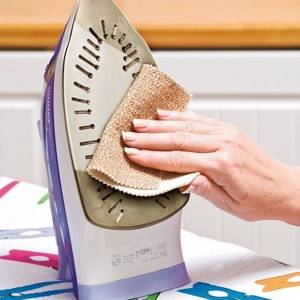
How to avoid carbon deposits
To prevent the formation of a layer of burnt fabric fibers on the working surface of the iron, you can use special pads made of thin metal. Some manufacturers of household appliances supply them complete with the iron. You can ask a consultant at a store that sells household appliances about the availability of a suitable cover for a specific model.
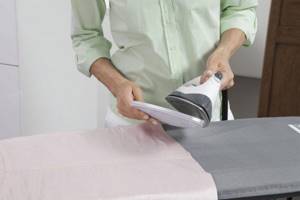
Regular gauze or thicker cotton fabric can replace such an overlay, maintain the ideal surface of the sole, prevent damage to the printed pattern or appliqué on clothing, or paint burning. This simple precaution will prevent the formation of shiny areas (lass) on woolen items and dark fabrics during ironing.
In such cases, gauze is used dry. There is no need to wet it as when steaming. Cotton fibers do not burn at temperatures recommended for ironing synthetic and woolen fabrics. Therefore, carbon deposits do not form on the iron, and things remain undamaged even if the permissible heating is slightly exceeded.
You can keep your work surface clean for a long time by observing the temperature regime and using simple measures to prevent the formation of soot. By wiping it with a clean cloth each time after ironing, you will be able to prevent the accumulation of dirt particles to which new fibers can stick. If it was not possible to avoid the fabric from burning, one of the proposed cleaning methods can help. It is only important to remember that plaque that occurs once is much easier to remove than cleaning a heavily soiled iron.
How to clean an iron with salt
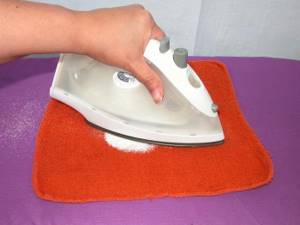
The iron is heated to maximum temperature and begins to move across the salt “cushion”.
Sprinkle a thick layer of salt onto newspaper or any matte paper. The iron is heated to maximum temperature and begins to move across the salt “cushion”.
It will take about 5 minutes for the carbon deposits to completely disappear. To increase the effectiveness of this method, you can rub a white paraffin candle and mix the shavings with salt before starting the procedure.
Cleaning Teflon Coating
Do not use abrasive products to clean the Teflon coating. In this case, there are more gentle and no less effective remedies that you can prepare yourself.
- A glass cleaner does the job well.
- Soak a cotton cloth in the vinegar solution and iron the cloth. For effectiveness, you can add a little ammonia.
- Budget options include gel-based dishwashing detergent.
- Many housewives recommend using baby cream. The composition effectively copes with dirt. It is enough to wipe the hot sole with a rag and cream.
- Teflon coating can be cleaned in a non-traditional way. For this you will need regular chalk. Heat the iron and rub the soleplate with chalk powder. Roll up the stain in any convenient way. You can do the same with laundry soap.
Cleaning durable surfaces
The soles made of titanium, stainless steel, and metal with sapphire coating are very durable, so abrasive substances can also be used when cleaning.
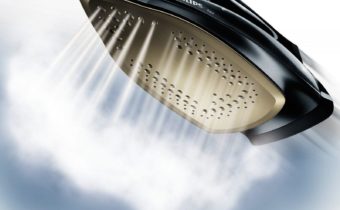
Salt
Salt is not harmful to hard surfaces; it acts as a kind of scrub. The salt poured onto a white paper sheet is “ironed” for a minute. It will darken and the sole will become clean. Melted synthetic material from a strong surface can be scraped off with a wooden spatula.
Matchbox
Or rather, not the whole box, but only sulfur applied to the side. Use this area to gently rub the dirt on the sole.
Paraffin
Before use, place a slightly heated iron in a tray so that the wax applied to the sole and melted by the temperature flows into the container and not onto things. You can remove any remaining paraffin by ironing the unwanted fabric.
Dishwashing liquid
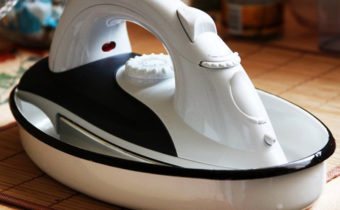
Take baking soda, dilute it with liquid, and apply the resulting slurry to a cold sole. Leave for 10 minutes, rub the surface, then remove the mass with a damp cloth.
Important:
Even such surfaces should not be cleaned with sharp objects, sandpaper or a knife should be used. Scratches on the soleplate may impair the performance of the device.
